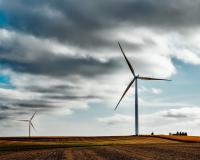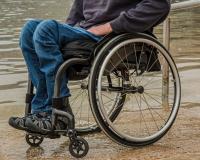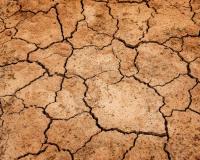
Vibrant Environment
Climate Change And Sustainability
All | Biodiversity | Climate Change and Sustainability | Environmental Justice | Governance and Rule of Law | Land Use and Natural Resources | Oceans and Coasts | Pollution Control

This summer, the Miami-Dade County’s Office of Resilience conducted a series of workshops inviting the community’s input into the drafting of the county’s climate action strategy plan. These workshops were held to offer community members the opportunity to comment on local policy measures as well as shape the direction of current and future policymaking by offering suggestions and ideas. Rather than simply checking off boxes for expectations of citizen engagement by local government, the stated goal of these workshops is to produce an accessible avenue for community members from all identities, especially those that have historically faced discrimination, to take the lead on local climate adaptation and mitigation efforts. In accomplishing this goal, language accessibility is a key consideration to ensure effective citizen engagement and maximized impact.

During the spring of 2020, while we were in the early grip of the pandemic, I pointed in an earlier blog to a possible silver lining. Perhaps what appeared then to be broad societal acceptance of the science around the coronavirus might leave us better able to also rally around the science on our other mega challenge — climate change.
Well, the broad consensus on pandemic science hasn’t exactly held. The prior administration downplayed the pandemic — and the science behind it — in an effort to rally the economy and stir up support for a reelection bid. Then, with the turnover at the White House and in the Senate, the politicization of pandemic science intensified, with some questioning whether a scourge that has disrupted lives everywhere and killed over four million people is actually an elaborate hoax.

In Louisiana and elsewhere around the United States, climate change is a common topic of conversation these days. With record heat, drought, wildfires, hurricanes, and flooding, this summer has brought home the reality of climate impacts, and revealed the country’s general lack of preparedness for this new normal. As evidenced by Hurricane Ida, Louisianans are increasingly facing serious consequences resulting from more extreme weather events and sea-level rise. Department of Health and Human Services Secretary Xavier Becerra summed things up in his recent remarks establishing a new Office of Climate Change and Health Equity, “Louisiana is being pummeled.”

Railways, public transit, motor vehicles, airplanes, marine vessels, cycling, walking, and their supporting infrastructures are all part of a comprehensive connected transportation network that is a key driver of economic growth and opportunity. But the transportation sector also now accounts for approximately 28% of all greenhouse gas (GHG) emissions, surpassing the energy sector. For that and other reasons, developing and deploying new and emerging technologies in transportation “is a key component of global efforts to improve safety, meet the needs of people wherever they live, and combat climate change,” said Katie Thomson, Amazon’s Vice President & Associate General Counsel for Worldwide Transportation and Logistics.

A new model compost procurement policy developed by the Environmental Law Institute and the Natural Resources Defense Council could help municipalities around the country in their efforts to divert food scraps and other organic materials from their landfills and incinerators and, in so doing, realize myriad economic and environmental benefits.

Technology has never been more up-close and personal. Internet-connected devices set our home’s temperature, control our lights, and drive our cars. Not just our homes, but our industries, businesses, and cities are striving to be “smart.” The secret to all these smart devices and systems is a combination of digital sensors and Internet connectivity. Together, they form a globally interconnected system of electronics—what has been dubbed the “Internet of Things,” or IoT. The ability for IoT to revolutionize our economy and daily life has been widely theorized, and some optimists have envisioned IoT as the pathway to a technological utopia. However, the environmental effects of the IoT revolution are often overlooked. Twenty-five billion IoT devices are expected to be deployed worldwide by the end of this year, a number expected to grow at a rate of 19% annually. IoT systems are being implemented to manage industries like manufacturing and transportation and thus will be responsible for controlling a vast amount of energy consumption and pollution. Each device also places a burden on the environment with fabrication and eventual disposal. Moreover, IoT devices may change human behavior and energy demand with ambiguous end effects. As IoT gains widespread adoption, both human and technological factors need to be addressed when considering the overall environmental impact of IoT. The complex ways IoT will interact with us and our environment are difficult to measure and predict, leading to ambivalence about how IoT will grow and mature.

Climate change poses unique dangers and challenges for people with disabilities. Unfortunately, despite wide recognition of the vulnerabilities of people with disabilities to climate change, disability perspectives and needs remain largely excluded from climate adaptation and mitigation efforts. Effective and inclusive climate action planning is essential to protecting the 26% of Americans who experience a disability from the most dangerous aspects of climate change.

On July 14, the ELI China Program hosted a webinar on climate change litigation in the United States for the environmental law community in China. The event garnered a record-breaking audience of over 5,500 participants sustained over the course of three hours of detailed instruction on climate law.

This is Part 2 of a two-part blog series on climate change and its impact on indigenous peoples in the United States. Part 1 introduced the impacts of climate change on indigenous communities, while Part 2 provides specific examples of how these communities are responding in order to protect their land, people, and resources.

This is Part 1 of a two-part blog series on climate change and indigenous peoples in the United States. Part 1 introduces the impacts of climate change on indigenous communities, and Part 2 looks more in depth at how these communities are responding in order to protect their land, people, and resources.